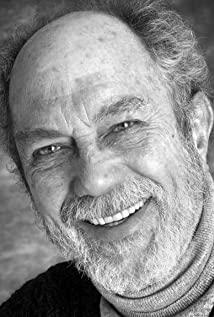When it comes to medieval Europe, it is estimated that a picture will come to the mind of many people: a group of knights armed like lobsters are fighting each other near a fortified castle, and a priest is praying nearby. Besides castles, knights and priests, there is another word used to describe the Middle Ages, and that is darkness. The word darkness is often used in history textbooks to define the Middle Ages. But the fact is that many cities in Europe arose in the Middle Ages, and many magnificent Gothic churches were built during that period. Was the Middle Ages Really Dark? What is it like? The novel "Temple of Spring and Autumn" can take us to experience the real medieval Europe. Ken Follett, author of Temple Spring and Autumn, is a contemporary master of historical fiction and Edgar Allan Poe Lifetime Master Award winner, whose works have been translated into 30 languages. There is also a special word for his works, called all-night novels, which means that you can't stop reading, even if you stay up all night, you have to read it in one breath. The biggest feature of Follett's historical novels is that the content is based on history. He seamlessly integrates real and fictional characters in history, making people feel like they have traveled back to the past, as if they were in that historical period. It is said that after his work is written, it will be shown to historians to ensure that it is in line with the historical context of the time. "Temple of Autumn" is Follett's best-selling work, hailed as an "epic masterpiece," with more than 26 million copies sold. The story told in the novel is not complicated, and the protagonists are also ordinary people, but it reflects all levels of society. Reading this novel, we can strongly experience the real Middle Ages while worrying about the fate of the characters. The famous writer Michael Kavanich commented: "In this book, I seem to see myself living hundreds of years ago, yearning, struggling, and living with all my strength." 1. The truth comes from the details. The story of "Temple of Spring and Autumn" takes place in a small town in England in the 12th century. During the construction of a church, various forces have appeared one after another, fighting openly and secretly. It is mixed with political and religious conflicts, competition for thrones and titles, love, revenge and other content. The three protagonists are ordinary people: a builder who dreams of building a church, a monk who strictly abides by the teachings, and the daughter of a desolate count. The perspective of ordinary people can bring a more realistic sense of substitution, and a large number of detailed descriptions in the novel greatly enhance this sense of reality. When Philip, the vice abbot of the monastery, went to seek the help of the bishop, he was stopped by the bishop's attendants because he dressed too simply. The bishop, dressed in sumptuous silk clothes and having an exquisite breakfast, was noncommittal to Philip. After the bishop finished breakfast, he said to Philip, "Are you going to see the king like this?" Philip suddenly realized that it was disrespectful, but at the same time he He also believes that real monks should not pursue clothing too much. This detailed description fully reflects the luxury of the upper echelons of the church. The count's daughter Alena, after her father was imprisoned, went to seek justice for the king, but was stopped by the guards at the door. She didn't understand. The reason for the guards was very simple, because nobles all wore leather boots, and only commoners wore wooden shoes. While Alena fled all the way, the wooden shoes she was wearing were given by a civilian halfway along the way. But the guards did not believe that Alena was a noble because of this. A pair of shoes reflects the difference of class. The description of many details such as food, clothing, housing and transportation truly reproduces the class differences and people's way of life. 2. Struggle for survival In modern society, many people feel that survival is not easy. In the Middle Ages, it was more difficult for people to survive, especially ordinary people. The realism of people's struggle for survival in "Temple of Spring and Autumn" is impressive. Tom, the builder, made money by his craft, and he took his family around, going wherever there was work. He could lose his job at any time as the project could be terminated for various reasons. For example, he first built a wedding house for the son of a nobleman, but because of the cancellation of the wedding, the house was not built, and Tom lost his job. Tom must quickly find a new job, and his family of four needs him to support him. Unfortunately, when they passed the forest, the most valuable pig was also snatched by robbers, and there were many robbers hiding in the forest. Due to the outbreak of the war and the reduction in construction demand, Tom could not find a job for several months, and finally he had to abandon his newborn child. Tom's ideal is to build a church. The important reason is that it takes decades to build a church, enough to support him and his family for a lifetime. After her father lost her title, Alena fell from a noble lady to the bottom of the society. Because she and her brother Charlie can't know anything, they are on the streets and can't even eat. They tried to work part-time, but were rejected because they were not strong enough. In the process of looking for a job, Alena is almost tricked into a brothel. Later, Alena found a business opportunity in wool business, but she was discriminated against because of her young age, and the profiteer was only willing to give half the price. The peasants were forbidden to grind their own wheat into flour and had to go to the mill to grind the flour so the nobles could collect their taxes. The markets did not form spontaneously either, they had to have the permission of the king, and were only open on Sundays, and the distance between the two markets could not be less than 20 miles in a straight line. Business is prospering day by day, but businessmen may go bankrupt in an instant because of a fire, and never recover. It is difficult for ordinary people to survive, and it is not easy for those at the top. Although churches and nobles own territories, if they are not managed well, they will soon fall into a crisis of survival. Philip's monastery was in the A state of being unable to make ends meet. After Philip became the vice president, he asked the monks to work in person, and the situation improved. And the knights had no money, they could not afford war horses and long swords, and they could not fight. The war exacerbated the difficulty of survival, and the novel wrote about the battle for the throne, the battle for the title and the conflict between politics and religion. After a battle, the burning and looting of the city followed, and the defeated nobles would be held captive and then held for ransom. Wars will also lead to famine, more people going bankrupt, and more people taking risks and becoming robbers. The living conditions of different groups of people make us truly feel the chaos and darkness of the Middle Ages. 3. Persistence in Dreams The real world is made up of real people. The characters in the novel are vividly portrayed, and their thinking and emotional expression have obvious characteristics of the times. The worse the living environment, the more people need spiritual support. Religious spirit was an unavoidable topic in the Middle Ages. In the 12th century, the secular authority of the church was weakening, but people's pursuit of the divine spirit was increasing. The artistic style of the Gothic church developed in the 12th century reflects this spiritual pursuit. Ellen and Tom are in love, but for some reason the church requires them to be separated for a year. Ellen expresses her disdain for the canon by urinating in public before returning to the forest with her son Jack. Jack's dream was to build a Gothic church, and he was forced to leave England, wandering all the way in France and Spain. During his wanderings, he continued to study and absorbed a lot of knowledge of architecture and sculpture. Eventually, he became the architect of the cathedral. Evil nobles will fear being burned by hellfire after death, and monks who have made mistakes will atone for their sins by repenting in their later years. Brother Philip dared to stand up to the king, the earl and the bishop of the parish. After King Henry II acquiesced in the murder of Archbishop Beckett by his nobles, Philip, armed with evidence, traveled across England and across the English Channel to sue Henry II across the continent. In the end, Henry II had to submit to Philip, the people were victorious, and the mighty was suppressed. Persistence in dreams supports people to cope with challenges in life, makes the story more real and full, and resonates in our hearts at the same time. As a commercial novel, "Temple of Spring and Autumn" provides a fun reading experience, but also allows us to appreciate the magnificent picture of the Middle Ages, as the "Chicago Sun" review said, "It will make you hold your breath and dazzle Fascinated and unforgettable for a long time." Written about the battle for the throne, the battle for the title, and the conflict between politics and religion. After a battle, the burning and looting of the city followed, and the defeated nobles would be held captive and then held for ransom. Wars will also lead to famine, more people going bankrupt, and more people taking risks and becoming robbers. The living conditions of different groups of people make us truly feel the chaos and darkness of the Middle Ages. 3. Persistence in Dreams The real world is made up of real people. The characters in the novel are vividly portrayed, and their thinking and emotional expression have obvious characteristics of the times. The worse the living environment, the more people need spiritual support. Religious spirit was an unavoidable topic in the Middle Ages. In the 12th century, the secular authority of the church was weakening, but people's pursuit of the divine spirit was increasing. The artistic style of the Gothic church developed in the 12th century reflects this spiritual pursuit. Ellen and Tom are in love, but for some reason the church requires them to be separated for a year. Ellen expresses her disdain for the canon by urinating in public before returning to the forest with her son Jack. Jack's dream was to build a Gothic church, and he was forced to leave England, wandering all the way in France and Spain. During his wanderings, he continued to study and absorbed a lot of knowledge of architecture and sculpture. Eventually, he became the architect of the cathedral. Evil nobles will fear being burned by hellfire after death, and monks who have made mistakes will atone for their sins by repenting in their later years. Brother Philip dared to stand up to the king, the earl and the bishop of the parish. After King Henry II acquiesced in the murder of Archbishop Beckett by his nobles, Philip, armed with evidence, traveled across England and across the English Channel to sue Henry II across the continent. In the end, Henry II had to submit to Philip, the people were victorious, and the mighty was suppressed. Persistence in dreams supports people to cope with challenges in life, makes the story more real and full, and resonates in our hearts at the same time. As a commercial novel, "Temple of Spring and Autumn" provides a fun reading experience, but also allows us to appreciate the magnificent picture of the Middle Ages, as the "Chicago Sun" review said, "It will make you hold your breath and dazzle Fascinated and unforgettable for a long time." Written about the battle for the throne, the battle for the title, and the conflict between politics and religion. After a battle, the burning and looting of the city followed, and the defeated nobles would be held captive and then held for ransom. Wars will also lead to famine, more people going bankrupt, and more people taking risks and becoming robbers. The living conditions of different groups of people make us truly feel the chaos and darkness of the Middle Ages. 3. Persistence in Dreams The real world is made up of real people. The characters in the novel are vividly portrayed, and their thinking and emotional expression have obvious characteristics of the times. The worse the living environment, the more people need spiritual support. Religious spirit was an unavoidable topic in the Middle Ages. In the 12th century, the secular authority of the church was weakening, but people's pursuit of the divine spirit was increasing. The artistic style of the Gothic church developed in the 12th century reflects this spiritual pursuit. Ellen and Tom are in love, but for some reason the church requires them to be separated for a year. Ellen expresses her disdain for the canon by urinating in public before returning to the forest with her son Jack. Jack's dream was to build a Gothic church, and he was forced to leave England, wandering all the way in France and Spain. During his wanderings, he continued to study and absorbed a lot of knowledge of architecture and sculpture. Eventually, he became the architect of the cathedral. Evil nobles will fear being burned by hellfire after death, and monks who have made mistakes will atone for their sins by repenting in their later years. Brother Philip dared to stand up to the king, the earl and the bishop of the parish. After King Henry II acquiesced in the murder of Archbishop Beckett by his nobles, Philip, armed with evidence, traveled across England and across the English Channel to sue Henry II across the continent. In the end, Henry II had to submit to Philip, the people were victorious, and the mighty was suppressed. Persistence in dreams supports people to cope with challenges in life, makes the story more real and full, and resonates in our hearts at the same time. As a commercial novel, "Temple of Spring and Autumn" provides a fun reading experience, but also allows us to appreciate the magnificent picture of the Middle Ages, as the "Chicago Sun" review said, "It will make you hold your breath and dazzle Fascinated and unforgettable for a long time." The characters are vividly portrayed, and their thinking and emotional expression have obvious characteristics of the times. The worse the living environment, the more people need spiritual support. Religious spirit was an unavoidable topic in the Middle Ages. In the 12th century, the secular authority of the church was weakening, but people's pursuit of the divine spirit was increasing. The artistic style of the Gothic church developed in the 12th century reflects this spiritual pursuit. Ellen and Tom are in love, but for some reason the church requires them to be separated for a year. Ellen expresses her disdain for the canon by urinating in public before returning to the forest with her son Jack. Jack's dream was to build a Gothic church, and he was forced to leave England, wandering all the way in France and Spain. During his wanderings, he continued to study and absorbed a lot of knowledge of architecture and sculpture. Eventually, he became the architect of the cathedral. Evil nobles will fear being burned by hellfire after death, and monks who have made mistakes will atone for their sins by repenting in their later years. Brother Philip dared to stand up to the king, the earl and the bishop of the parish. After King Henry II acquiesced in the murder of Archbishop Beckett by his nobles, Philip, armed with evidence, traveled across England and across the English Channel to sue Henry II across the continent. In the end, Henry II had to submit to Philip, the people were victorious, and the mighty was suppressed. Persistence in dreams supports people to cope with challenges in life, makes the story more real and full, and resonates in our hearts at the same time. As a commercial novel, "Temple of Spring and Autumn" provides a fun reading experience, but also allows us to appreciate the magnificent picture of the Middle Ages, as the "Chicago Sun" review said, "It will make you hold your breath and dazzle Fascinated and unforgettable for a long time." The characters are vividly portrayed, and their thinking and emotional expression have obvious characteristics of the times. The worse the living environment, the more people need spiritual support. Religious spirit was an unavoidable topic in the Middle Ages. In the 12th century, the secular authority of the church was weakening, but people's pursuit of the divine spirit was increasing. The artistic style of the Gothic church developed in the 12th century reflects this spiritual pursuit. Ellen and Tom are in love, but for some reason the church requires them to be separated for a year. Ellen expresses her disdain for the canon by urinating in public before returning to the forest with her son Jack. Jack's dream was to build a Gothic church, and he was forced to leave England, wandering all the way in France and Spain. During his wanderings, he continued to study and absorbed a lot of knowledge of architecture and sculpture. Eventually, he became the architect of the cathedral. Evil nobles will fear being burned by hellfire after death, and monks who have made mistakes will atone for their sins by repenting in their later years. Brother Philip dared to stand up to the king, the earl and the bishop of the parish. After King Henry II acquiesced in the murder of Archbishop Beckett by his nobles, Philip, armed with evidence, traveled across England and across the English Channel to sue Henry II across the continent. In the end, Henry II had to submit to Philip, the people were victorious, and the mighty was suppressed. Persistence in dreams supports people to cope with challenges in life, makes the story more real and full, and resonates in our hearts at the same time. As a commercial novel, "Temple of Spring and Autumn" provides a fun reading experience, but also allows us to appreciate the magnificent picture of the Middle Ages, as the "Chicago Sun" review said, "It will make you hold your breath and dazzle Fascinated and unforgettable for a long time." to atone for yourself. Brother Philip dared to stand up to the king, the earl and the bishop of the parish. After King Henry II acquiesced in the murder of Archbishop Beckett by his nobles, Philip, armed with evidence, traveled across England and across the English Channel to sue Henry II across the continent. In the end, Henry II had to submit to Philip, the people were victorious, and the mighty was suppressed. Persistence in dreams supports people to cope with challenges in life, makes the story more real and full, and resonates in our hearts at the same time. As a commercial novel, "Temple of Spring and Autumn" provides a fun reading experience, but also allows us to appreciate the magnificent picture of the Middle Ages, as the "Chicago Sun" review said, "It will make you hold your breath and dazzle Fascinated and unforgettable for a long time." to atone for yourself. Brother Philip dared to stand up to the king, the earl and the bishop of the parish. After King Henry II acquiesced in the murder of Archbishop Beckett by his nobles, Philip, armed with evidence, traveled across England and across the English Channel to sue Henry II across the continent. In the end, Henry II had to submit to Philip, the people were victorious, and the mighty was suppressed. Persistence in dreams supports people to cope with challenges in life, makes the story more real and full, and resonates in our hearts at the same time. As a commercial novel, "Temple of Spring and Autumn" provides a fun reading experience, but also allows us to appreciate the magnificent picture of the Middle Ages, as the "Chicago Sun" review said, "It will make you hold your breath and dazzle Fascinated and unforgettable for a long time."
View more about The Pillars of the Earth reviews











